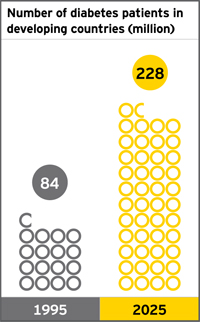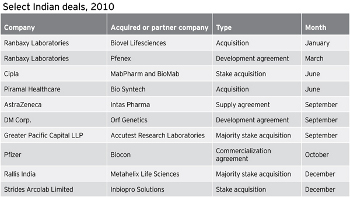Life Sciences Global Growth is Creating New Career Opportunities
By Bichlien Hoang, IEEE
On both a national and a global scale, the world of life sciences is enjoying tremendous growth, and the IEEE Board of Directors has declared life sciences as a top priority for 2011. Because life sciences technologies are expected to have a significant impact on global society over the next 5-25 years, new companies and career opportunities are springing to life all over the planet.

As one example, the New York Times recently called biomedical engineering the number one new job of the coming decade [1]. The Times based its list on statistics from the Bureau of Labor Statistics (BLS) [2], which in 2008 reported that biomedical engineering jobs are expected to grow a staggering 72% by 2018, the highest percentage growth of any field by far, and also the highest growth for a field that requires advanced education and training. As shown in Figure 1, this echoes a similar projection by US News and World Report which focused on “occupations that are expected to add jobs at an above-average rate over the next decade, as well as those that provide an above-average median income.” [3, 4]

What’s inspiring this amazing growth? The BLS report attributed the rapid rise in part to an aging U.S. population and the increasing demand for improved medical devices and systems. That view is consistent with Ernst & Young’s 25th annual industry report, Beyond borders: global biotechnology report 2011 [5] which describes diabetes (see Figure and cardiovascular conditions as expected to escalate dramatically with aging populations in the developed countries, and growing prosperity in emerging market countries [6]. Other specific growth areas include computer-assisted surgery, cellular and tissue engineering, rehabilitation, and orthopedic engineering.
Significantly, this growth is occurring not just in the United States, but it’s happening globally as well. For example, in Ireland today, the life sciences sector accounts for 50% of all exports, and that sector has been growing by 6% every year since 2000. Life sciences currently employ in excess of 52,000 people there.[7] Again, from Ernst & Young’s 25th annual global biotechnology industry report, here are some exciting facts about the world-wide state of biotechnology [8]:
- Companies in established biotech centers had a record-breaking aggregate net profit of $4.7 billion, a 30% increase from the previous year.
- Biotech companies in Canada, Europe and the U.S. raised $25 billion in capital in 2010 – returning to pre-financial crisis levels.
- In the U.S., large debt financings by mature biotech companies grew by 150% over 2009.
This story is becoming more and more common. Recently, Scientific American magazine released their third annual WorldView: A Global Biotechnology Perspective [10]:
- Malaysia is a biotech hub ranking third in the world for the best Enterprise Support of its biotech industry by Scientific American’s Worldview Scorecard because the country hosts a business friendly environment and significant venture capital availability.
- India, as an established hub for biotech, received a high ranking in venture capital availability, and evidence suggests that many Indian-Americans in the field continue to expand their cross-border exchange of biotech expertise and information. Also, from Ernst & Young’s 25th annual global biotechnology industry report, India is well poised to explore innovative areas such as molecular diagnostics and personalized medicine, and to capitalize on its existing strength in biosimilars. The country also appears to be ramping up its efforts in industrial biotechnology – this chart (Figure 3) from Ernst and Young shows the biotech-related acquisitions or agreements in 2010. [11]
- Canada placed third in the world for the best biotech hub outside the US. Canada has shown tremendous strength and innovation in the past decade to improve its biotech industry.
- Italy has become a world biotech leader. Its biotech industry has also benefited from having the second highest score in global Intellectual Property (IP) protection.
- In Australia [12], Melbourne and the State of Victoria are a hotbed for biotech innovation. Life sciences companies there have developed everything from swine flu vaccine to a bionic ear. Victoria now boasts more than 13 major medical research institutes, and the government has invested nearly $4 billion in science and innovation during the last 10 years.
- In Singapore [13], the “Biopolis”, is a new custom-built biomedical research and development hub conceived to provide space for biomedical research, and to promote collaboration between private companies and public scientific/educational bodies.
- It’s currently home to more than 100 global biomedical sciences companies carrying out a variety of business operations, including cutting-edge research and manufacturing. Biomedical manufacturing alone increased from SGD $6.3 billion in 2000 to SGD $19 billion in 2008. As a good indication of Singapore’s steady success in building up its biomedical R&D capabilities, the number of jobs more than doubled, to more than 12,000, between 2000 and 2008. [14]

Collaboration is Key
While all this growth is expected to offer many new career opportunities, since work in life sciences requires knowledge that crosses many different disciplines, collaboration is key. As stated by IEEE President Moshe Kam, “The understanding of many processes in the vast area called life sciences–from molecular biology to proteomics, to genomics, the advance in computational biology–have now created an opportunity to import technology, algorithms, mathematical ideas, from the hard sciences and form engineering into biology and life sciences in a way that will really be very important in the coming 30 to 50 years, in terms of therapeutics, in terms of pharmaceutics, in terms of fighting diseases and plagues”.[15]
With its unmatched diversity of expertise, richness of programs and proven standards-development capability, IEEE plans to play a strong global and unifying role in the life sciences arena. Articles highlighted on this portal are examples of how collaboration among disciplines at the intersection of engineering and life sciences are advancing technology for humanity and can improve the quality of life for all people.
Planning a Career in Life Sciences
With close to thirty IEEE societies, councils and organizational units active in life sciences, IEEE is able to provide a wide diversity of expertise, information, resources, and the vision necessary to realize the full potential of rapidly-advancing life science fields. Please continue to visit this portal for news on life sciences innovations and career opportunities.
- Top 10 List: Where the Jobs Are
- http://www.bls.gov/emp/ep_table_103.htm
- The 50 Best Careers of 2011
- Biomedical Engineer Rated As Best Career in 2011 by U.S. News & World Report
- Five things you need to know about the state of the industry
- Beyond borders: Global biotechnology report 2011 (Page 4 )
- Pioneering researcher Luke O’Neill on Ireland’s life sciences sector transformation
- Five things you need to know about the state of the industry
- http://www.saworldview.com/
- Five international biotech countries to watch
- Beyond borders: Global biotechnology report 2011 (Page 30)
- Melbourne’s Thriving Biotechnology Industry Showcased at the BIO International Convention
- http://www.pharmaceutical-technology.com/projects/biopolis/
- http://www.issues.org/26.3/poh.html
- Saving Engineering Education: An Interview with IEEE President Moshe Kam, Part 2







